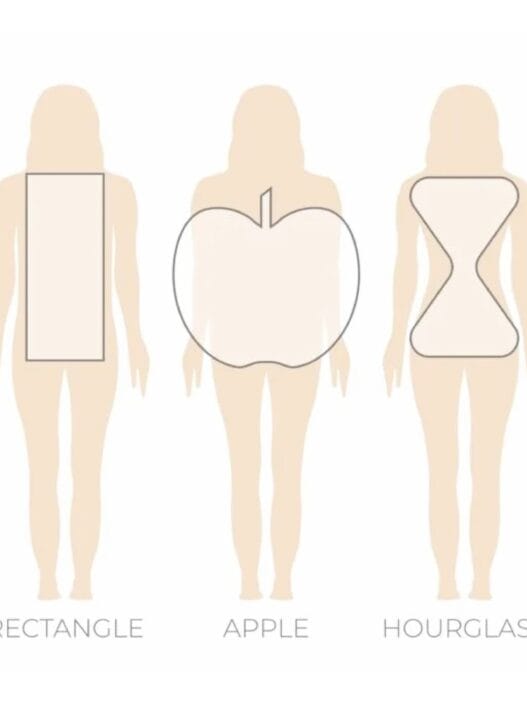Understanding Face Shapes
Face shapes play a crucial role in determining which styles of sunglasses will complement an individual’s features. There are five primary face shapes: oval, round, square, heart, and rectangular. Each shape has unique characteristics that can guide the selection of suitable sunglasses.
To identify your face shape, observe the proportions of your forehead, cheekbones, and jawline. For an oval face shape, the length is greater than the width, and the forehead is slightly wider than the chin, offering a versatile canvas for various sunglass styles. A round face exhibits equal width and length, with soft curves; therefore, angular sunglasses can add definition. In contrast, a square face is characterized by a broad forehead and jawline, making round or oval frames ideal to soften these strong angles.
The heart-shaped face features a wider forehead with a narrow chin, and here, sunglasses that are wider at the bottom can help balance the proportions. Finally, a rectangular face has a longer length than width, and round frames are typically recommended to offset the linear features. Knowing your face shape is essential not only for aesthetic appeal but also for achieving comfort and functionality when selecting sunglasses.
To accurately categorize your face shape, measuring facial proportions can be invaluable. Take a ruler to measure the width of your forehead, cheekbones, and jawline, as well as the length from your hairline to your chin. By comparing these measurements, you can gain a clearer understanding of your unique facial geometry. Understanding these distinctions will empower you to make informed choices when searching for the appropriate sunglasses that enhance your face shape. This foundational knowledge of face shapes is pivotal in guiding your sunglasses selection process.
Sunglasses Styles for Different Face Shapes
Choosing the right sunglasses requires an understanding of how different styles suit various face shapes. Each face shape has its unique features, and selecting a corresponding style can enhance the overall appearance while providing necessary sun protection. The primary face shapes to consider are oval, round, square, heart, and diamond. Each shape benefits from particular frame designs that either complement or balance facial proportions.
For oval face shapes, which are characterized by balanced proportions, almost any sunglasses style is suitable. However, oversized frames and geometric shapes can add an intriguing contrast to the soft curves of the face, enhancing its natural balance. Likewise, round frames can provide a quirky contrast that flatters oval features.
Individuals with round faces should opt for angular and rectangular sunglasses. These styles add definition, sharpness, and elongate the face. Frames that have a bit of height will also help create the illusion of a longer face, making narrow frames highly beneficial.
Square face shapes are defined by strong jawlines and broad foreheads. Sunglasses with rounded edges are ideal, as they soften the angular features. Aviators, oversized round frames, or cat-eye styles can add a touch of femininity or warmth to the overall look.
A heart-shaped face features a wider forehead and a narrower jawline. Here, sunglasses with wider frames, such as aviators or butterfly shapes, work well to harmonize the broad upper head. Features like embellishments or color can also draw attention away from the forehead.
For diamond-shaped faces, characterized by high cheekbones, choosing rimless or oval frames can highlight the cheekbones while minimizing the appearance of a narrower forehead and chin. Styles that are wider than the cheekbones, like cat-eye glasses, can also be flattering.
When choosing sunglasses, it can be helpful to visualize how these individual styles interact with face shapes. By aligning frame shapes with facial contours, one can achieve a proportionate and harmonious look, ultimately enhancing personal style and functionality.
Considerations Beyond Face Shape
When selecting the ideal pair of sunglasses, it is essential to consider factors extending beyond mere face shape. While understanding your facial contours is a significant first step, several other elements play critical roles in ensuring that your sunglasses not only enhance your appearance but also serve their primary function of protection and comfort.
One of the foremost considerations is the lens material. The sunglasses market offers a variety of lens options, including glass, polycarbonate, and plastic lenses. Each material has its advantages; for instance, polycarbonate lenses are lightweight and impact-resistant, making them an excellent choice for active lifestyles, whereas glass lenses, though heavier, provide superior clarity and scratch resistance.
UV protection is another vital aspect when choosing sunglasses. Quality lenses should provide 100% protection against UVA and UVB rays. Prolonged exposure to these harmful rays can lead to serious eye conditions, including cataracts. Therefore, selecting sunglasses that boast high UV protection ratings is crucial for maintaining eye health while enjoying sunny conditions.
Frame materials also warrant consideration, as they influence both aesthetics and durability. Common options include plastic, metal, and acetate, each catering to different style preferences and functional needs. It is advisable to choose frames that balance quality and comfort, ensuring they are not only stylish but also suitable for extended wear.
Moreover, personal style preferences and lifestyle applications cannot be overlooked. Whether one engages in sports, outdoor activities, or simply wishes to make a fashion statement, sunglasses should resonate with the individual’s lifestyle. For instance, wraparound styles may offer better peripheral vision and protection during active sports, whereas sleek aviators might perfectly complement a casual summer outfit. An informed selection leads to a perfect blend of practicality and personal expression in eyewear choices.
Tips for Trying on Sunglasses
Choosing the right sunglasses involves more than simply selecting a style that catches your eye. Proper fitting plays a crucial role in determining comfort, performance, and aesthetics. When trying on sunglasses, it is imperative to focus on several key aspects. First, assess the comfort level of the frames. Sunglasses that pinch the nose or create pressure behind the ears can lead to discomfort over time. Ensure the frames sit lightly on your face without sliding down or feeling overly tight.
Next, evaluate the coverage offered by the lenses. Ideally, the sunglasses should provide ample coverage to shield your eyes from harmful UV rays. This includes ensuring that the lenses are wide enough and wrap around your face adequately, blocking sunlight from entering from the sides. The aim is to maintain both protection and visual clarity regardless of the angle of sunlight exposure.
Style alignment with your personal taste is equally significant. While fashion trends can influence choices, selecting a pair that resonates with your style ensures that you will wear them frequently. Think about where and how you will wear your sunglasses: casual outings, sports activities, or more formal events — ensuring styles are versatile can provide added value.
When considering where to shop, the decision between in-store versus online purchasing can impact your selection process. In-store shopping allows you to physically try on several styles and see how they complement your face shape. Additionally, utilizing mirrors or taking photographs can help you visualize how they will look in different settings. For online shopping, pay close attention to sizing guides and customer reviews, which can offer insights into the fit and comfort of the sunglasses. Ultimately, assessing these factors will facilitate a well-informed purchase that enhances both your look and eye protection.












